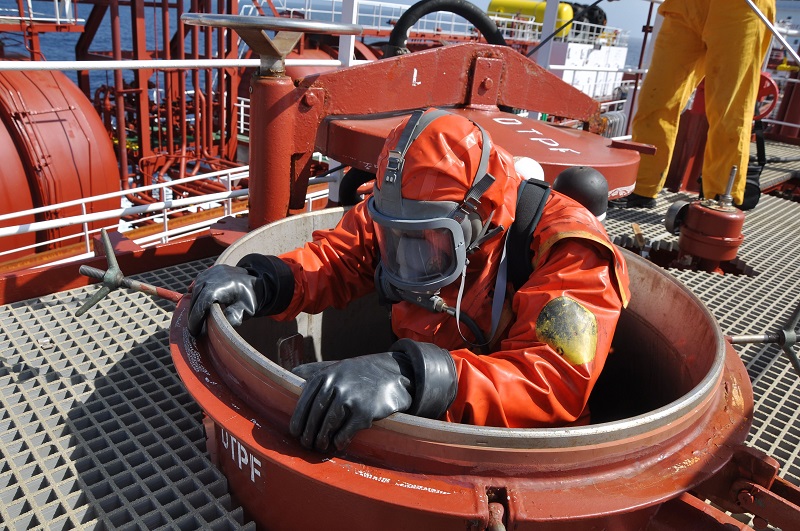Maritime chemists are leading efforts to make onboard working conditions safer, especially in the enclosed spaces aboard vessels.
Whether it’s on the seas, in port, or in the shipyard, one of the most dangerous places to work onboard a vessel is in the enclosed, confined holds located below deck — spaces that are large enough to enter and work inside but have only one entry/exit, in most cases limited ventilation, and are not designed for long-term human occupancy.

Injuries and fatalities can result from fires, explosions, asphyxiation, exposure to toxic chemicals or gases, drowning or entrapment. Having effective safety protocols in place is extremely important, especially when “hot” work is being performed in these spaces — work that requires the use of equipment that produces flame or extreme heat, such as welding, cutting, burning, or abrasive blasting, creating an increased risk of fire and explosions.
In order to reduce the risks of accidents in these areas of a vessel, both OSHA and the U.S. Coast Guard require that a National Fire Protection Association certified marine chemist “test for hot work in confined and enclosed spaces, adjacent spaces, and equipment (such as fuel tanks, cargo tanks, piping, pumps, etc.) containing, or that have previously contained, flammable or combustible liquids or gases.”
The Job of a Certified Marine Chemist
The primary job of a certified marine chemist (CMC) is to inspect marine vessels that are in need of repair work. A CMC is a marine safety specialist who is “qualified to determine whether entry and work within confined spaces on marine vessels and within shipyards may be undertaken safely in accordance with NFPA 306, Standard for the Control of Gas Hazards on Vessels.” They inspect and report conditions as they see them, follow a survey, and ensure that a vessel follows NFPA 306 standard requirements.
NFPA certified marine chemists are currently the only independent specialists incorporated by name in both U.S. Department of Labor (OSHA) requirements for shipyard employment and U.S. Coast Guard hot work regulations. CMCs are highly trained in sampling techniques and possess a thorough understanding of the chemical reactions that may occur in various repair operations.
Some of the tests a CMC perform include:
When companies and workers ignore the recommendations of the CMC, accidents can occur, resulting in serious injuries and even death. One recent example involves an explosion onboard a tugboat undergoing repairs at a shipyard in Kentucky. The explosion occurred when employees were cutting and welding in an atmosphere containing flammable gases. The explosion killed three and injured six. OSHA determined that this tragedy could have been prevented had proper confined space procedures been followed.
When Safety Rules Are Ignored Accidents Can Happen
When a failure to follow safety regulations onboard a vessel leads to an accident, injured workers may have the right to seek compensation for their damages under the Jones Act and other maritime laws.
Lambert Zainey has been protecting the rights of maritime workers for over 40 years. During this time, we have helped thousands of injured maritime workers obtain the compensation they deserve for the pain, suffering and economic losses caused by their injuries. If you are hurt, unable to work and facing mounting bills as a result of an injury that occurred in an accident that took place below decks, contact Lambert Zainey today to schedule a free consultation with one of our experienced maritime injury attorneys.







